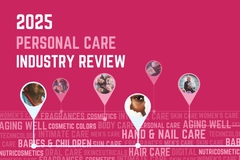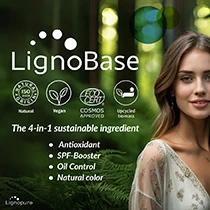Unilever harnesses “carbon rainbow” to curtail fossil sources for eco-friendly NPD

10 Nov 2022 --- Unilever is sharing cases of chemical modifications and altered product formulas which are reducing the carbon footprint of some of its cleaning products. The company is highlighting the need to diversify carbon sources and has created the concept of a ‘carbon rainbow’ – ranging from circular and fossil-based sources.
This is part of Unilever’s Climate Transition Action Plan to be net-zero by 2039 and reduce greenhouse gas emissions (GHG) by 50% per consumer by 2030.
Companies cannot rely so largely on the use of virgin fossil compounds, as seen by the skyrocketing prices of oil and gas. “Integrating sustainability and business strategies isn’t just a moral objective anymore – it’s essential in order to future-proof your business,” notes Jon Hague, head of Clean Future, Science and Technology for Home Care at Unilever.
“We must start using non-fossil carbon feedstocks and create agile supply chains of the future if we want our business to survive.”
Carbon rainbow
The carbon rainbow was created in order to identify alternative carbon sources that can be used in place of non-renewable carbon.
 Blue carbon is derived from marine sources, such as the active components of seaweed.“With fossil-based or black carbon – once you’ve refined it and used it in a product and when those products biodegrade, it’s almost as though you’ve taken the crude oil and just burnt it. It’s no different – the biodegradation results in the release of that fossil carbon into the atmosphere,” Hague says.
Blue carbon is derived from marine sources, such as the active components of seaweed.“With fossil-based or black carbon – once you’ve refined it and used it in a product and when those products biodegrade, it’s almost as though you’ve taken the crude oil and just burnt it. It’s no different – the biodegradation results in the release of that fossil carbon into the atmosphere,” Hague says.
He highlights that with plant-based (or green) carbon, “things become circular.” For example, a palm tree is grown, it absorbs carbon dioxide, it is then harvested, refined and finally used. Carbon dioxide becomes circular when it is released at the end of a product’s life and is fed back into a plant-based system.
Companies could convert all of their carbon to green carbon from palm trees if palm plantations were not limited in size.“But that’s not reality – we have to protect nature. Unilever has been leading efforts to address deforestation,” Hague says and asserts that there need to be alternatives found for green carbon as well.
Black carbon has been used industrially for many years, but, according to Hague, there are other sources of carbon in the atmosphere that can be repurposed. Plastic waste can be collected and transformed into chemicals that are used as cleaning agents. This is known as grey carbon.
Purple carbon is the practice of absorbing carbon dioxide from the atmosphere or industrial emissions. Blue carbon is derived from marine sources, such as the active components of seaweed. Then there is a mixture of several carbon colors that Unilever refers to as brown carbon.
The R&D team is investigating the development of novel carbon sources at scale throughout the entire rainbow because it is “likely we will have to use a mix of sources to get to where we want to be,” Hague explains. Companies could convert all of their carbon to green carbon from palm trees if palm plantations were not limited in size.
Companies could convert all of their carbon to green carbon from palm trees if palm plantations were not limited in size.
Diversifying carbon sources
“Carbon chemistry is the chemistry of this planet. It’s the chemistry of life. You’re made of carbon. I’m made of carbon. Fossil fuels got their name because they are created from the decomposed bodies of trees or marine animals,” comments Hague.
“There is no other option than to use carbon because you can’t assemble useful ingredients any other way than to make them out of stitching together the carbon chain.”
He stresses that eradicating carbon from products completely isn’t possible.
The company has piloted OMO laundry liquid capsules in China, Sunlight dishwashing liquid in South Africa and Coral laundry liquid in Germany and holds that this is just one way how the chemistry of home cleaning is re-invented to stimulate growth opportunities while turning away from fossil fuels.
In a report for global leaders at COP27 to reflect on, Unilever flagged GHG statistics and implored the world to halve emissions by 2030 to avoid the worst impacts of climate change.
By Mieke Meintjes












